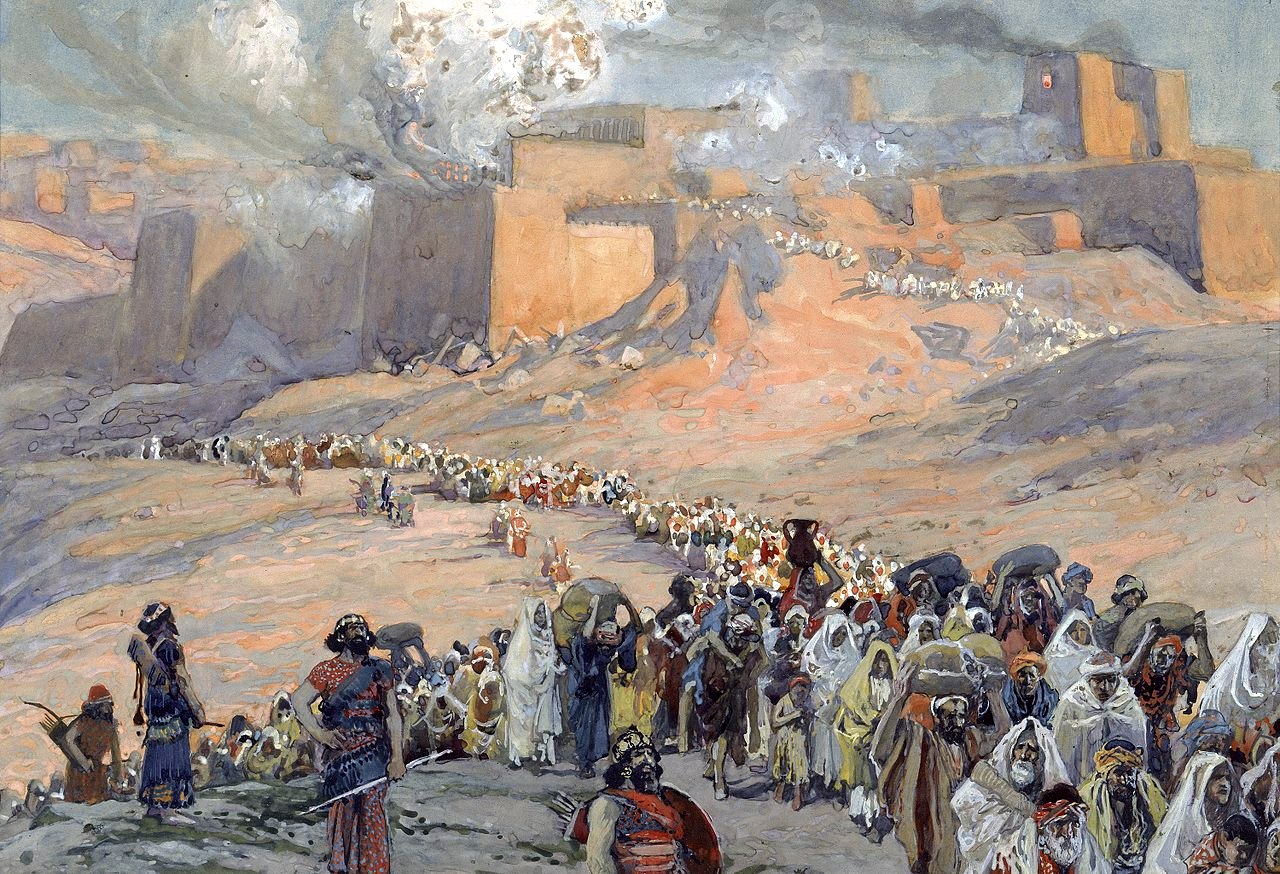Exile and Captivity in Babylon
The Babylonian captivity or Babylonian exile is the period in Jewish history during which a number of people from the ancient Kingdom of Judah were captives in Babylonia. After the Battle of Carchemish in 605 BC, King Nebuchadnezzar of Babylon besieged Jerusalem, resulting in tribute being paid by King Jehoiakim. Jehoiakim refused to pay tribute in Nebuchadnezzar’s fourth year, which led to another siege in Nebuchadnezzar’s seventh year, culminating with the death of Jehoiakim and the exile of King Jeconiah, his court and many others; Jeconiah’s successor Zedekiah and others were exiled in Nebuchadnezzar’s eighteenth year; a later deportation occurred in Nebuchadnezzar’s twenty-third year. The dates, numbers of deportations, and numbers of deportees given in the biblical accounts vary. These deportations are dated to 597 BC for the first, with others dated at 587/586 BC, and 582/581 BC respectively.
After the fall of Babylon to the Persian king Cyrus the Great in 539 BC, exiled Judeans were permitted to return to Judah. According to the biblical book of Ezra, construction of the second temple in Jerusalem began around 537 BC. All these events are considered significant in Jewish history and culture, and had a far-reaching impact on the development of Judaism.
Archaeological studies have revealed that not all of the population of Judah was deported, and that, although Jerusalem was utterly destroyed, other parts of Judah continued to be inhabited during the period of the exile. The return of the exiles was a gradual process rather than a single event, and many of the deportees or their descendants did not return, becoming the ancestors of the Iraqi Jews.
UNDER CONSTRUCTION

This is a placeholder.
Please come back!

